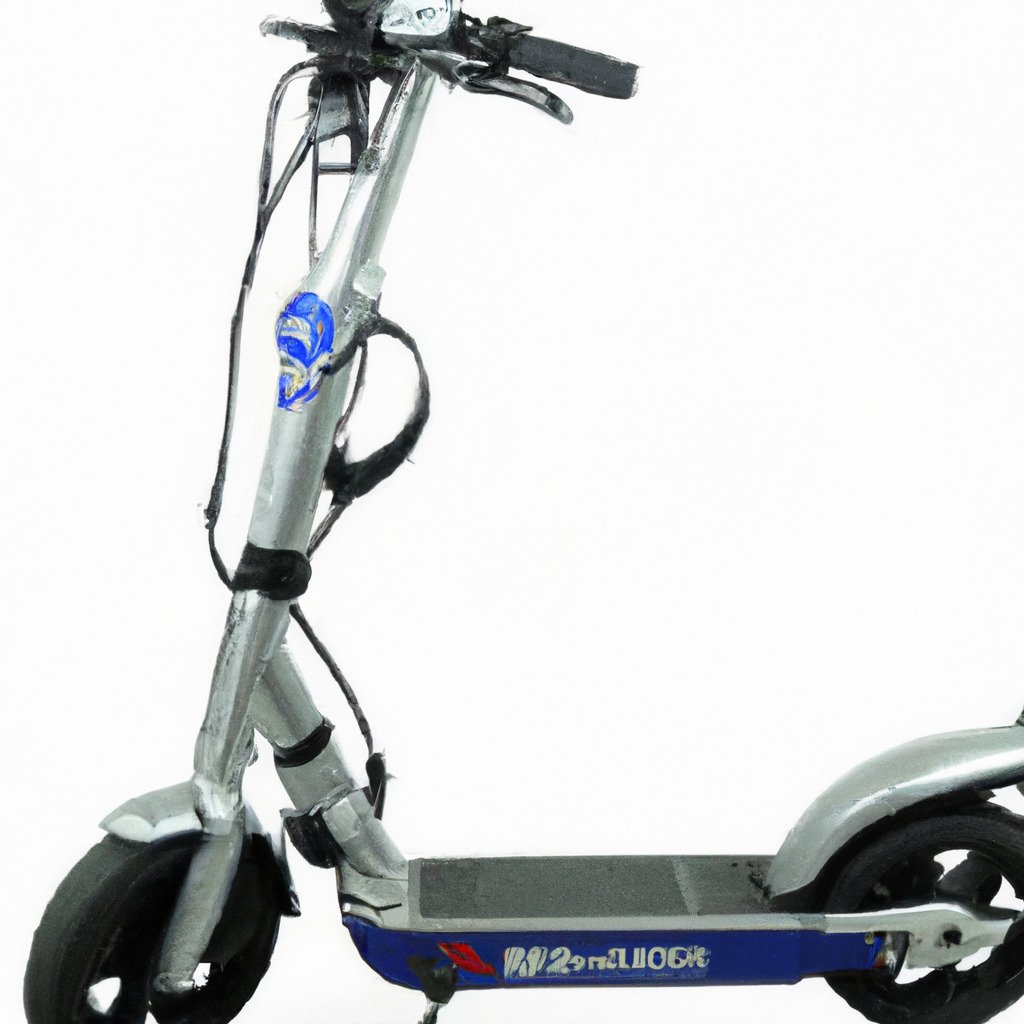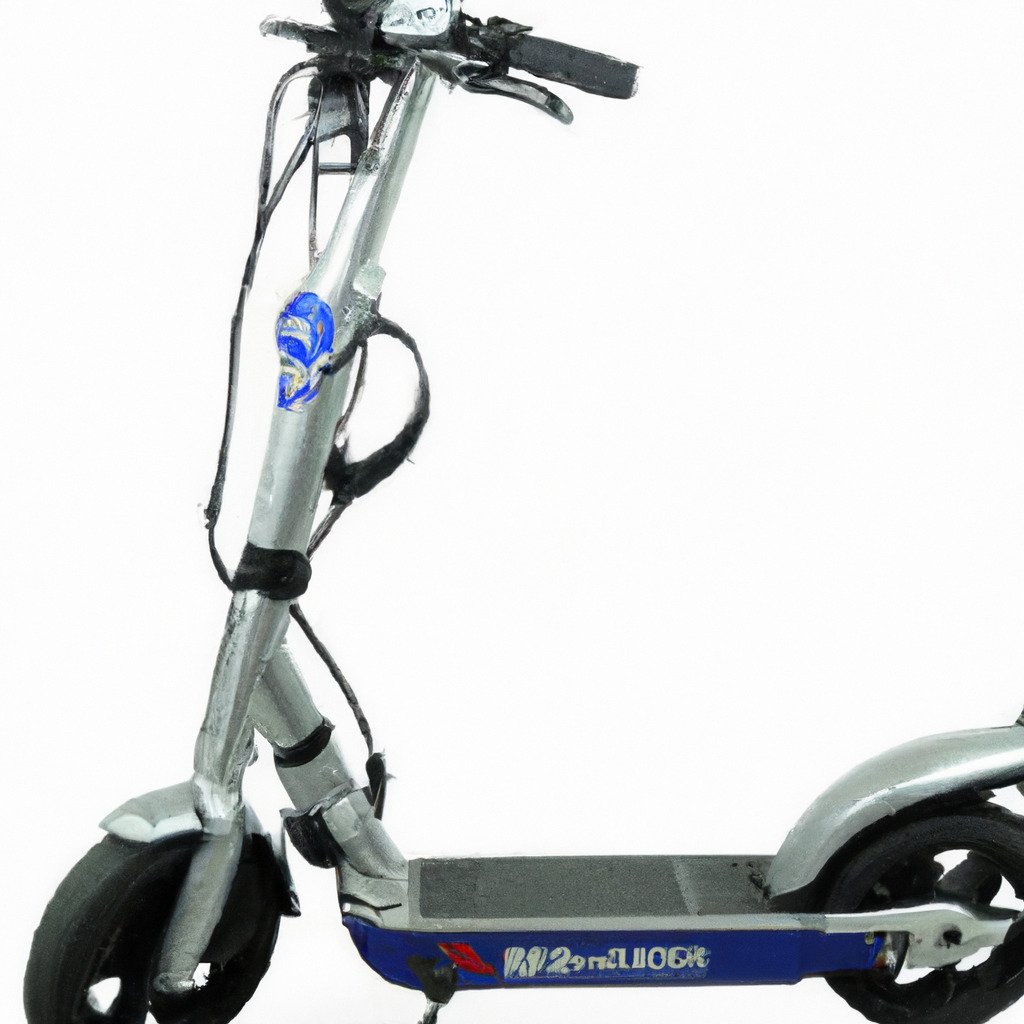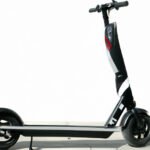
Electric bikes and electric scooters are both popular choices for eco-friendly transportation, offering efficient and convenient ways to travel. However, understanding the differences between them is crucial when deciding which option best fits your needs. In this article, we will explore the key factors that set electric bikes and electric scooters apart, including their design, performance, and suitability for different terrains. By the end, you will have a clear understanding of how these two modes of transportation compare, helping you make an informed decision for your personal commuting requirements.
Cost
Initial cost
Electric bikes and electric scooters vary in their initial cost. Electric bikes generally tend to be more expensive upfront compared to electric scooters. The price of an electric bike can range from a few hundred dollars to several thousand dollars, depending on the brand, quality, and features. However, it is important to note that electric bikes often offer more advanced technology and higher quality components, which can justify the higher initial cost.
On the other hand, electric scooters generally have a lower initial cost compared to electric bikes. They are typically priced between a few hundred to a couple of thousand dollars. The lower initial cost of electric scooters can be appealing to those who are on a tighter budget or are looking for a cost-effective mode of transportation.
Cost of maintenance
When it comes to maintenance costs, electric scooters generally have an advantage over electric bikes. Electric scooters have relatively fewer components and moving parts, which means there are fewer things that can go wrong and require maintenance or repairs. Additionally, the maintenance tasks for electric scooters are often simple and can be performed by the owner themselves, which helps to keep maintenance costs low.
On the other hand, electric bikes may require more maintenance due to their complex design and additional components. The battery, motor, gears, and other electronic components of electric bikes may require occasional maintenance or even professional assistance for repairs. This can result in higher maintenance costs compared to electric scooters.
Cost of charging
Both electric bikes and electric scooters require charging for their batteries. The cost of charging, however, can vary depending on factors such as local electricity rates and battery capacity. In general, electric bikes have larger battery capacities compared to electric scooters, which means they may consume more electricity during the charging process.
The cost of charging an electric bike or electric scooter can also differ depending on the charging method used. Charging from a standard electrical outlet is typically the most cost-effective option, as it utilizes regular household electricity. However, using specialized fast chargers or charging stations that may require payment can incur additional costs.
Performance
Speed
Electric bikes generally offer higher speeds compared to electric scooters. The average top speed of an electric bike can range from 20 to 30 miles per hour (32 to 48 kilometers per hour), with some high-performance models capable of reaching speeds up to 40 miles per hour (64 kilometers per hour), or even higher in certain cases. These higher speeds make electric bikes a viable option for those looking to travel longer distances or maintain a higher average speed.
In contrast, electric scooters typically have lower top speeds compared to electric bikes. Most electric scooters have a top speed ranging from 15 to 25 miles per hour (24 to 40 kilometers per hour). While this may be sufficient for many urban commuting scenarios, it may not be as ideal for those who require faster speeds.
Range
When it comes to range, electric bikes generally offer a longer distance per charge compared to electric scooters. The average range of an electric bike can range from 30 to 60 miles (48 to 96 kilometers), depending on various factors such as battery capacity, terrain, rider weight, and speed. Some electric bikes even have the ability to achieve ranges exceeding 100 miles (160 kilometers) on a single charge, especially when equipped with additional battery packs.
Electric scooters, on the other hand, typically have a shorter range compared to electric bikes. The average range of an electric scooter can range from 10 to 40 miles (16 to 64 kilometers). However, it is important to note that the range of an electric scooter can be affected by factors such as rider weight, speed, terrain, and battery capacity.
Hill climbing ability
Electric bikes generally have better hill climbing ability compared to electric scooters. This is due to the higher torque and power delivery capabilities of electric bike motors, which allows them to tackle steep inclines more easily. Electric bikes are often equipped with specialized gear systems that help optimize power delivery for uphill climbs.
On the other hand, electric scooters may struggle more when faced with steep inclines. While some electric scooters may have enough power to handle moderate inclines, they may not be as efficient or effective as electric bikes in climbing steeper hills.
Maneuverability
Both electric bikes and electric scooters offer good maneuverability in urban environments. However, electric scooters generally have an advantage when it comes to tight spaces and crowded areas. The compact size and nimble nature of electric scooters make them highly maneuverable, allowing riders to easily navigate through congested traffic or squeeze into parking spaces with limited room.
Electric bikes, while still relatively maneuverable, may be slightly larger and bulkier compared to electric scooters. This can sometimes limit their maneuverability in crowded areas, especially if the bike has a wider handlebar or longer wheelbase. However, advancements in electric bike design have led to more compact and agile models, minimizing these limitations.

Environment
Emissions
Both electric bikes and electric scooters have the advantage of being environmentally-friendly alternatives to traditional gasoline-powered vehicles. One of the key benefits of electric bikes and electric scooters is their zero tailpipe emissions. Unlike gas-powered vehicles, electric bikes and scooters do not produce any harmful exhaust emissions that contribute to air pollution and global warming.
Energy efficiency
Electric bikes and electric scooters are known for their high energy efficiency. Compared to conventional gasoline-powered vehicles, electric bikes and scooters are much more efficient in converting energy into motion. This is due to the direct transmission of power from the battery to the motor, resulting in minimal energy loss during the conversion process.
Additionally, regenerative braking systems are commonly found in both electric bikes and electric scooters. These systems capture and store energy that is typically lost during braking, further enhancing their energy efficiency.
Eco-friendliness of production
The eco-friendliness of the production of electric bikes and electric scooters can vary depending on the materials and manufacturing processes used. However, in general, electric bikes and electric scooters have a lower environmental impact compared to traditional vehicles.
The production of electric bikes and electric scooters typically involves fewer raw materials compared to traditional vehicles. Additionally, the absence of internal combustion engines and associated components, such as fuel tanks and exhaust systems, further reduces the environmental burden associated with production.
Furthermore, as the demand for electric bikes and electric scooters increases, manufacturers are increasingly focusing on sustainable and environmentally-friendly production practices. This includes using recycled materials, reducing waste and emissions in manufacturing processes, and implementing more efficient supply chains.
Riding Experience
Comfort
Electric bikes and electric scooters offer varying levels of comfort, depending on their design and features. Electric bikes generally provide a more comfortable riding experience due to their larger frames, wider saddles, and suspension systems. These features help to absorb shocks and vibrations, making electric bikes suitable for longer rides or uneven terrains.
Electric scooters, on the other hand, may have a more compact design and smaller wheels, which can result in a slightly less comfortable ride on rough surfaces. However, some electric scooters are equipped with suspension systems or pneumatic tires, which can improve comfort to some extent.
Ease of use
Both electric bikes and electric scooters are generally easy to use, even for beginners. Electric bikes typically resemble traditional bicycles in terms of operation, with the addition of an electric motor and battery. Riders simply need to pedal or engage the motor using a throttle or pedal-assist system to facilitate propulsion.
Electric scooters, on the other hand, are even more straightforward to use. With a simple twist of the throttle or pressing a button, riders can easily control the speed and acceleration of electric scooters. Many electric scooters also feature intuitive control interfaces, making them user-friendly even for those without prior experience.
Safety features
Electric bikes and electric scooters often come equipped with various safety features to ensure a safe riding experience. Both modes of transportation may include headlights and taillights, allowing for improved visibility during low light conditions. Additionally, a significant number of electric bikes and electric scooters are fitted with rearview mirrors, which can help riders to be aware of their surroundings and minimize potential blind spots.
In terms of braking systems, electric bikes and electric scooters usually incorporate reliable and responsive braking mechanisms. Most electric bikes feature both front and rear mechanical disc brakes, while electric scooters commonly use drum brakes or disc brakes for efficient braking performance.
Furthermore, some electric bikes and electric scooters are equipped with advanced safety features such as anti-lock braking systems (ABS) and built-in alarm systems, further enhancing rider safety.

Practicality
Storage and carrying capacity
Electric bikes usually have more storage and carrying capacity compared to electric scooters. Electric bikes typically have larger frames and integrated racks or baskets, which offer ample space for carrying groceries, backpacks, or even larger items. Some electric bikes also feature additional mounting points or attachments for panniers or bike bags, further increasing their storage options.
Electric scooters, while generally more compact, may have limited storage options. Some electric scooters may feature a small storage compartment under the seat, which can hold small personal items such as a wallet or phone. However, electric scooters typically do not offer the same level of storage capacity as electric bikes.
Availability of charging infrastructure
The availability of charging infrastructure can be a crucial factor to consider when choosing between an electric bike and an electric scooter. Electric scooters often have an advantage in terms of charging infrastructure, as they can be charged using a standard electrical outlet found in most homes or public locations. This means that electric scooter owners can conveniently charge their vehicles wherever an outlet is available, making charging more accessible.
Electric bikes, on the other hand, may require charging stations or specialized charging equipment due to their larger battery capacity. While the availability of charging infrastructure for electric bikes has been increasing in recent years, it may not be as prevalent as charging options for electric scooters. It is important to consider the availability of charging stations in your area when deciding between an electric bike and an electric scooter.
Suitability for various terrains
Both electric bikes and electric scooters offer versatility in terms of terrain suitability, although their capabilities may vary. Electric bikes are generally better suited for various terrains, including rough or uneven surfaces, gravel paths, and even off-road trails. This is due to their larger wheels, wider tires, and suspension systems, which provide better stability and traction.
Electric scooters, while capable of handling urban environments and smoother surfaces with ease, may have limitations when it comes to rough or uneven terrains. Their smaller wheels and lack of suspension can result in a less comfortable and potentially unstable ride on surfaces such as gravel or grass. However, there are electric scooters specifically designed for off-road use, which come with larger wheels, enhanced suspension systems, and increased ground clearance.
Legality and Regulations
Licensing and age requirements
The licensing and age requirements for electric bikes and electric scooters can vary depending on the jurisdiction. In many countries and states, electric bikes are treated similarly to traditional bicycles and do not require a special license or registration. Riders of electric bikes are typically subject to the same age regulations as regular cyclists.
Electric scooters, on the other hand, often have specific regulations governing their use. Depending on the region, electric scooters may require a driver’s license or a specific permit to operate. Furthermore, there may be age restrictions for riding electric scooters, with some jurisdictions requiring riders to be at least 16 years old.
It is essential to familiarize yourself with the specific licensing and age requirements in your area before purchasing an electric bike or electric scooter.
Road usage restrictions
The road usage restrictions for electric bikes and electric scooters can vary depending on the region and local regulations. Electric bikes are generally allowed to ride on bike lanes, shared paths, and designated cycling routes. However, they may be restricted from using certain high-speed roads or pedestrian-only areas.
Electric scooters may have more limitations on where they can be ridden. In some areas, electric scooters are only allowed on roads with lower speed limits or in designated bike lanes. Additionally, certain jurisdictions may prohibit electric scooters from being ridden on sidewalks or pedestrian-only areas.
It is important to familiarize yourself with the road usage restrictions and regulations specific to electric bikes and electric scooters in your area to ensure legal and safe riding.
Parking regulations
Parking regulations for electric bikes and electric scooters can also vary depending on the jurisdiction. In general, electric bikes can be parked in the same areas as regular bicycles, such as bike racks or designated parking areas. However, it is important to ensure that electric bikes are securely locked to prevent theft.
Electric scooters may have more specific parking regulations. Some areas may require electric scooters to be parked in designated scooter parking areas, while others may allow them to be parked in regular bicycle or motorcycle parking spaces. It is crucial to familiarize yourself with the parking regulations in your area to avoid fines or penalties.
Fitness Benefits
Physical exercise
Both electric bikes and electric scooters can provide fitness benefits, although in different ways. Electric bikes, with their pedal-assist or full-electric modes, allow riders to choose the level of physical effort they want to exert. Riders can choose to pedal more and rely less on the electric motor, getting a good cardiovascular workout while enjoying the assistance of the motor when needed. This can make electric bikes an excellent option for those looking to incorporate physical exercise into their daily commute or recreational activities.
Electric scooters, although less physically demanding in terms of pedaling, still require riders to use their muscles for balance and stability. Standing on an electric scooter and controlling the throttle and steering can engage core muscles, leg muscles, and improve overall balance.
Encouraging active lifestyle
Both electric bikes and electric scooters can contribute to an active and healthy lifestyle. The convenience and ease of use of electric bikes and electric scooters encourage individuals to use active modes of transportation instead of relying solely on cars or other passive methods. By incorporating electric bikes or electric scooters into their daily routines, individuals can reduce sedentary behavior and promote an active lifestyle.
Using an electric bike or an electric scooter as a means of transportation also allows individuals to enjoy the outdoors and explore their surroundings in an engaging way. The increased mobility and flexibility provided by these modes of transportation can motivate individuals to engage in more physical activities, such as biking or exploring new areas, which can further contribute to an active and healthy lifestyle.
Aesthetics
Design and appearance
Both electric bikes and electric scooters come in a variety of designs and appearances to cater to different preferences and styles. Electric bikes often resemble traditional bicycles, with various frame styles ranging from sleek and modern to classic and retro-inspired. They come in a multitude of colors and finishes, allowing riders to find a design that suits their personal taste.
Electric scooters, on the other hand, tend to have a more futuristic and streamlined design. They often feature sleek lines, minimalistic aesthetics, and compact forms, making them visually appealing to many riders. Electric scooters are available in an array of colors and finishes, allowing riders to choose a design that aligns with their personal style.
Customization options
Both electric bikes and electric scooters offer customization options for riders to personalize their vehicles. Electric bikes can be customized with accessories such as baskets, panniers, or cargo racks to increase storage capacity or enhance functionality. Additionally, riders can personalize their bikes with accessories like lights, bells, and even handlebar grips in different colors and patterns.
Electric scooters also have customization options available, although they may be slightly more limited compared to electric bikes. Riders can opt for different types of handlebar grips, colorful wheel trims, or personalized decals to add their individual touch to the scooter’s appearance.
Overall, both electric bikes and electric scooters provide opportunities for riders to express their personal style and preferences through customization.
Noise Level
Quietness during operation
One of the advantages of both electric bikes and electric scooters is their quiet operation compared to traditional gasoline-powered vehicles. Electric bikes and electric scooters use electric motors, which produce minimal noise during operation. This quietness is beneficial for riders as well as for the environment, reducing noise pollution in urban areas.
The lack of engine noise can contribute to a peaceful and enjoyable riding experience, allowing riders to appreciate their surroundings and have conversations without the interference of loud engine sounds. Additionally, the quiet operation of electric bikes and electric scooters can be advantageous in residential areas or areas with noise restrictions, as it helps to minimize disturbances to others.
Accessibility
Ease of access for different age groups and physical abilities
Both electric bikes and electric scooters offer ease of access for different age groups and physical abilities, making them inclusive modes of transportation.
Electric bikes often come in a variety of frame sizes, allowing riders of different heights and body types to find a bike that suits them. Furthermore, electric bikes can be equipped with step-through frames, which have a lower top tube, making it easier for riders with limited mobility or flexibility to mount and dismount the bike.
Electric scooters, with their simple controls and intuitive handling, can be easily accessed by individuals across various age groups and physical abilities. Their compact design and low step-over height make it convenient for riders of different heights or riders with limited mobility to use them.
The accessibility of both electric bikes and electric scooters allows individuals who may have limitations or prefer a more comfortable and stable mode of transportation to enjoy the benefits of electric mobility.
In conclusion, electric bikes and electric scooters have distinct characteristics and advantages in different areas. When considering whether to choose an electric bike or an electric scooter, it is crucial to evaluate factors such as cost, performance, environmental impact, riding experience, practicality, legality, fitness benefits, aesthetics, noise levels, and accessibility. By carefully assessing these factors, you can make an informed decision based on your individual needs, preferences, and the specific conditions of your intended usage.




















